Editor's Note: This guide was originally published on May 15, 2025, and was comprehensively updated on October 13, 2025, to include two new, data-rich case studies and updated information on Titanium alloy materials.
CNC machining titanium offers the ideal solution when you need parts that are both durable and lightweight. It combines strength with reduced weight, and with the right approach, it's absolutely machinable.
Titanium, a strong, lightweight, and corrosion-resistant metal, can be effectively CNC machined. While challenging, the right techniques and tooling make it an excellent choice for high-performance applications where these properties are critical.
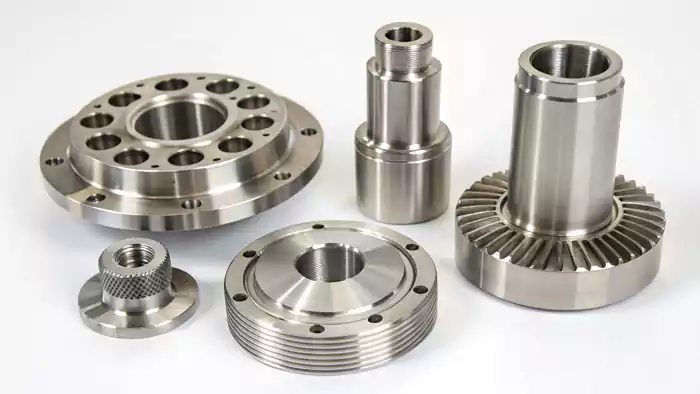
When I first encountered titanium, I was intrigued by its reputation. It's known for being tough, but that toughness extends to how it behaves on a CNC machine. It’s not the easiest material to work with, I'll tell you that straight up. However, mastering its machining process has opened up incredible possibilities for the parts we produce at Allied Metal. It’s a material that truly tests your skills and equipment, but the results – high-performance, durable components1 – are often worth every bit of effort. Let's explore why this metal is so sought after and how we tackle its unique machining demands.
What Exactly Is a Titanium Alloy?
Ever wondered why some metal parts are incredibly strong yet surprisingly light? Often, the secret lies in using a titanium alloy, but what makes it so special for tough jobs?
A titanium alloy is a mixture of titanium and other chemical elements. This combination enhances properties like strength, heat resistance, and corrosion resistance, making it superior to pure titanium for many demanding applications.
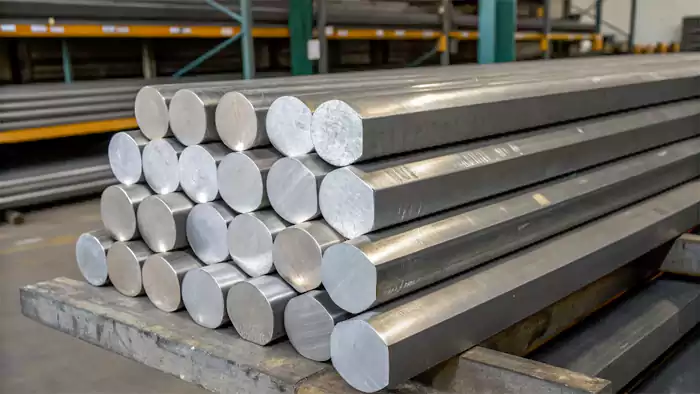
Diving Deeper into Titanium Alloys
When we talk about titanium in manufacturing, we're almost always talking about a titanium alloy. Pure titanium is useful, sure, but it's when we start adding other elements – like aluminum, vanadium, molybdenum, and others – that things get really interesting. I remember a project for an aerospace client where they needed a component with an extremely high strength-to-weight ratio and the ability to withstand significant temperature variations. Pure titanium wouldn't cut it, but a specific titanium alloy was perfect.
The goal of creating these alloys is to tailor the material's characteristics. For instance, adding aluminum and vanadium (as in the very common Ti-6Al-4V2) significantly increases strength while keeping the weight low. Other elements might be added to improve:
- Corrosion resistance: Titanium is already great at this, but some alloys enhance it further for specific harsh environments.
- Weldability: This can be a crucial factor in complex assemblies.
- Creep resistance: Important for parts that are under stress at high temperatures for long periods.
Think of it like baking. Flour on its own is pretty basic. But add eggs, sugar, and yeast, and you get bread – something much more complex and useful. It's the same principle with titanium alloys; we're creating a high-performance material engineered for specific, often extreme, conditions. The base titanium provides the excellent foundation of good strength, low density, and amazing corrosion resistance. The alloying elements then fine-tune these properties, pushing them to levels pure titanium can't reach. This is why I always emphasize to my team the importance of understanding the specific alloy we're working with; it dictates our machining approach.
What Are the Different Types, Grades, and Characteristics of Titanium Alloys?
You know titanium alloys offer great benefits, but how do you pick the right one? With so many grades available, choosing incorrectly can impact performance and cost significantly.
Titanium alloys are categorized into grades, each with unique characteristics. Common grades include Grade 2 (commercially pure, good ductility) and Grade 5 (Ti-6Al-4V, high strength), suited for different applications.
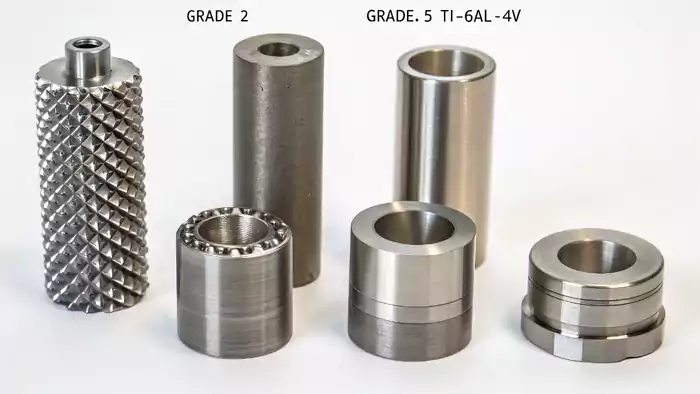
Diving Deeper into Titanium Grades
Understanding the different grades of titanium is crucial. It's not a one-size-fits-all situation. I’ve seen projects stall because the wrong grade was specified, leading to either over-engineering and unnecessary cost, or worse, a part that fails under stress.
Let's break down some of the most common grades we encounter:
| Grade | Common Name(s) | Key Characteristics | Typical Applications | My Notes |
|---|---|---|---|---|
| Grade 1 | Commercially Pure (CP)3 | Highest purity, best ductility, lowest strength | Chemical processing, architectural | Easiest to form, but not for high-stress parts. Good corrosion resistance. |
| Grade 2 | Commercially Pure (CP) | Good strength-to-weight, excellent corrosion resistance | Marine hardware, medical implants, piping | A workhorse CP grade. It's a good balance of formability, strength, and weldability. |
| Grade 5 | Ti-6Al-4V | High strength, good heat treat response, weldable | Aerospace components, engine parts, medical | The most common titanium alloy by far. It's my go-to for many demanding applications. Harder to machine. |
| Grade 7 | Ti-0.15Pd | Similar to Grade 2 but with enhanced corrosion resistance (especially to acids) due to palladium addition | Chemical processing equipment | When extreme corrosion resistance is paramount. |
| Grade 9 | Ti-3Al-2.5V | Medium strength, good cold formability | Hydraulic tubing, bicycle frames | A good middle ground if Grade 5 is overkill but Grade 2 isn't strong enough. |
| Grade 23 | Ti-6Al-4V ELI4 | Extra Low Interstitials, improved ductility & fracture toughness compared to Grade 5 | Medical implants, surgical staples | Essentially a higher purity version of Grade 5, often preferred for biocompatibility. |
When a client like David comes to us with a project, one of the first things we discuss is the intended application. This helps us guide them towards the most suitable titanium grade. For example, if he's designing a structural component for a robot arm where high strength and low weight are critical, Grade 5 (Ti-6Al-4V) is often the starting point. But if it's a part exposed to highly corrosive chemicals, we might look at Grade 7. The "ELI" in Grade 23 stands for "Extra Low Interstitials," which means it has lower oxygen, nitrogen, and carbon content. This improves its ductility and fracture toughness, making it ideal for critical medical implants where reliability is non-negotiable. Choosing the right grade is a balance of performance requirements, machinability, and cost. It’s a decision that significantly impacts the success of the final product.
Can Titanium Actually Be CNC Machined?
You've heard titanium is super strong and light, perfect for your designs. But then you hear it’s a nightmare to machine. Can your complex parts even be made from it?
Yes, titanium can be CNC machined. However, it requires specific knowledge, tooling, and machine parameters due to its unique properties like low thermal conductivity and high chemical reactivity.
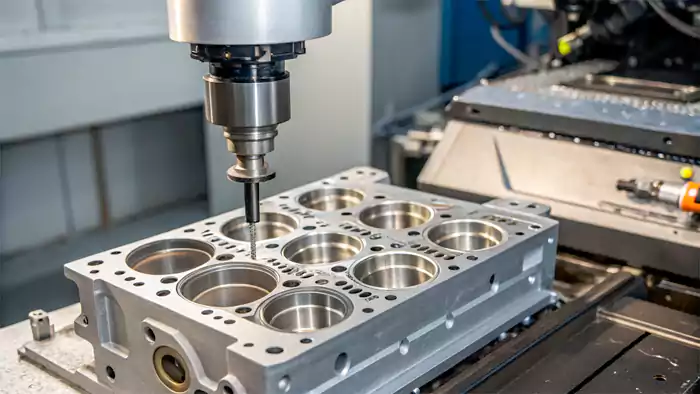
Diving Deeper into Titanium's Machinability
The short answer is yes, absolutely, titanium can be CNC machined. I've built a significant part of my business around machining it. But it's not like machining aluminum or steel. If you approach titanium with the same mindset and parameters you use for more common metals, you're going to have a bad time. I learned this the hard way early in my career!
Titanium’s reputation for being "difficult" to machine stems from a few core properties:
- Low Thermal Conductivity: Unlike aluminum, which dissipates heat quickly, titanium tends to concentrate heat in the cutting zone. This heat doesn't readily transfer into the chip or the workpiece; instead, it builds up in the cutting tool. This can lead to rapid tool wear, deformation of the tool, or even tool failure. I always tell my team to watch the heat – it's the biggest enemy when machining titanium.
- Chemical Reactivity at High Temperatures: At the high temperatures generated during cutting, titanium can react with the cutting tool material. This can cause galling (where material from the workpiece welds itself to the tool) and chipping of the tool edge.
- High Strength Maintained at Elevated Temperatures: Titanium doesn’t soften as much as steel does when it gets hot during machining. This means it continues to resist the cutting action, putting more stress on the tool.
- Work Hardening: Some titanium alloys, especially certain grades, have a tendency to work harden significantly. This means the surface layer being machined becomes harder than the bulk material, making subsequent cuts more difficult and accelerating tool wear.
- Low Modulus of Elasticity (Springiness): Titanium is more "springy" than steel. This can lead to workpiece deflection, chatter, and difficulty holding tight tolerances, especially with thin-walled parts.
So, while it's machinable, it demands respect. It requires a different approach: slower cutting speeds, higher feed rates (to an extent), robust and rigid machine setups, specialized cutting tools, and often copious amounts of high-pressure coolant5. When David sends us a design for a titanium part, our process planning is meticulous because we know there's less room for error compared to other materials.
What Are the Different Techniques for Machining Titanium?
Knowing titanium is machinable is one thing, but how is it actually done? Are there special tricks or methods needed to cut this tough material effectively and efficiently?
Key techniques for machining titanium include using low cutting speeds, high feed rates, sharp tools, and abundant coolant. Milling, turning, and drilling are common, each requiring careful parameter optimization.

Diving Deeper into Titanium Machining Techniques
Successfully machining titanium isn't about a single magic technique, but rather a combination of strategies tailored to the material's challenging nature. Over the years, I've found that a systematic approach is key. Here are some of the core techniques we employ:
1. Milling Titanium
Milling titanium, whether it's face milling, end milling, or slotting, requires careful attention to chip load and heat management.
- Tooling: We typically use solid carbide end mills6 with specific geometries designed for titanium. These often feature a high helix angle for good chip evacuation and sharp, positive rake cutting edges to reduce cutting forces. Coatings like TiAlN (Titanium Aluminum Nitride)7 or AlTiN (Aluminum Titanium Nitride) are common as they offer good heat and wear resistance.
- Parameters: The mantra here is "slow and steady wins the race." We use lower surface speeds (SFM or m/min) compared to steel to prevent excessive heat buildup. However, we try to maintain a healthy feed rate (chip load per tooth) to ensure the tool is constantly cutting and not rubbing, which can cause work hardening. Light radial depths of cut and moderate axial depths of cut are often preferred.
- Coolant: High-pressure coolant, directed precisely at the cutting zone, is crucial. It helps to control temperature, flush chips away, and reduce galling. Through-tool coolant is even better if the machine and tooling support it. I've seen jobs go from problematic to smooth just by optimizing the coolant delivery.
2. Turning Titanium
Turning operations on lathes also demand specific considerations.
- Tooling: Carbide inserts are the standard, again with coatings suitable for high temperatures. The geometry of the insert (rake angles, chipbreakers) is critical. Sharp edges are a must.
- Parameters: Similar to milling, lower cutting speeds are essential. Depth of cut should be consistent and ideally greater than the tool nose radius to avoid rubbing. Feed rates should be aggressive enough to prevent work hardening but not so high as to cause tool breakage.
- Machine Rigidity: Because of the high cutting forces, machine and tool holder rigidity are paramount to prevent chatter and maintain accuracy. Any vibration can quickly lead to tool failure.
3. Drilling Titanium
Drilling titanium can be particularly tricky due to the difficulty of chip evacuation from the hole and heat buildup at the drill tip.
- Tooling: Solid carbide drills or drills with carbide tips are preferred. Specialized drill point geometries (e.g., split point) can help with centering and reducing thrust forces. Again, sharp edges are vital.
- Parameters: Low speeds, moderate to high feed rates. Peck drilling (where the drill retracts periodically to clear chips and allow coolant to enter) is almost always necessary for deeper holes.
- Coolant: Abundant coolant, preferably through-spindle, is highly recommended to flush chips and cool the drill tip.
Across all these techniques, the common threads are managing heat, using the right (sharp and tough) tools, maintaining machine rigidity, and employing aggressive yet controlled cutting parameters. It's a balance that comes with experience. I often tell new machinists that titanium "talks" to you; you have to listen to the sounds of the cut and watch the chip formation to know if you're in the sweet spot.
How Do You Choose the Right Cutting Tool for Titanium Machining?
You know titanium is tough on tools, so how do you pick one that won't wear out instantly? Selecting the wrong cutter means wasted money, time, and potentially damaged parts.
Choose cutting tools made from high-grade carbide with specific coatings (like TiAlN or AlTiN). Ensure sharp cutting edges, positive rake angles, and a tool geometry designed for efficient chip evacuation.
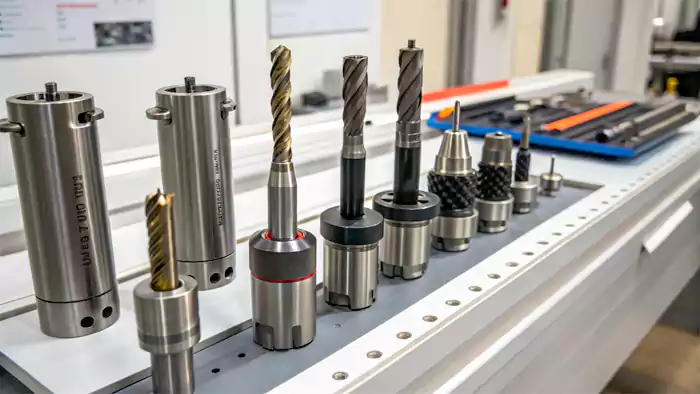
Diving Deeper into Cutting Tool Selection for Titanium
Choosing the right cutting tool for titanium is probably one of the most critical decisions in the entire machining process. If I had to pick one area where skimping will absolutely come back to bite you, it's tooling. Titanium is unforgiving; it will find any weakness in your cutting tool.
Here’s what I focus on when selecting tools for a titanium job:
-
Tool Material:
- Solid Carbide: For most applications like end mills, drills, and many inserts, high-quality, fine-grain tungsten carbide is the go-to. It offers a good balance of hardness, toughness, and wear resistance at the temperatures generated when cutting titanium.
- Polycrystalline Diamond (PCD): While PCD can be excellent for non-ferrous materials like aluminum, it's generally not recommended for titanium. Titanium reacts chemically with diamond at machining temperatures, leading to rapid tool wear. I learned this the hard way on an early experimental job – the PCD tool was gone in seconds!
- Ceramics: Certain ceramic grades can be used for high-speed finishing operations on some titanium alloys, but they are very brittle and require extremely stable machine setups. They aren't as versatile as carbide.
-
Tool Coatings:
- Coatings are essential. They provide a thermal barrier, reduce friction, increase surface hardness, and prevent chemical reactions between the tool and the titanium.
- TiAlN (Titanium Aluminum Nitride): This is a very common and effective coating. The aluminum content forms a layer of aluminum oxide at high temperatures, which is very hard and chemically stable.
- AlTiN (Aluminum Titanium Nitride): Similar to TiAlN, but with a higher aluminum content, often providing even better performance at higher temperatures. My team often prefers AlTiN for its enhanced thermal stability.
- Multi-layer coatings: Many manufacturers offer advanced multi-layer coatings specifically engineered for titanium.
-
Tool Geometry:
- Sharp Cutting Edges: This cannot be overstated. Titanium requires a shearing action, not a ploughing action. Any dullness or built-up edge will rapidly lead to tool failure and work hardening of the material. We inspect tool edges frequently.
- Positive Rake Angles: Positive axial and radial rake angles help reduce cutting forces, minimize heat generation, and promote better chip flow.
- High Helix Angles (for end mills): A higher helix (e.g., 35-45 degrees or more) helps lift the chip away from the cutting zone more effectively.
- Chipbreakers (for inserts): Well-designed chipbreakers are crucial for managing the stringy chips that titanium can produce, breaking them into manageable pieces.
- Coolant Delivery Features: Tools designed for through-tool coolant delivery are highly advantageous.
-
Tool Holder and Machine Rigidity:
- Even the best cutting tool will fail if the setup isn't rigid. High-quality tool holders (e.g., hydraulic chucks, shrink-fit holders) that minimize runout and vibration are essential. The machine tool itself must be robust and well-maintained.
When David is looking for a supplier, he values partners who understand these nuances. It’s not just about having a CNC machine; it’s about having the right tooling strategy. We invest heavily in high-quality tools and ongoing training for our machinists because, with titanium, the tool is often the difference between a profitable job and a costly mistake.
What About the Surface Finish of Machined Titanium Parts?
Your titanium parts need to look good and function perfectly, often requiring a specific surface smoothness. Can CNC machining deliver a good finish on such a tough material, or is extensive polishing always needed?
CNC machining can achieve good surface finishes on titanium, typically in the range of Ra 1.6 µm (63 µin) to Ra 0.8 µm (32 µin) or better, depending on the process and tooling. Post-processing can further improve it.
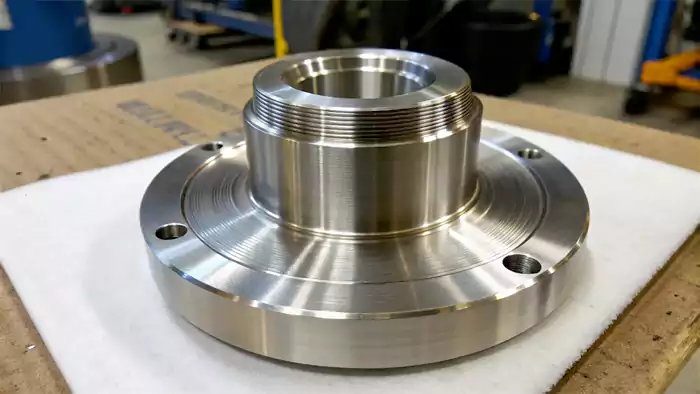
Diving Deeper into Titanium Surface Finish
Achieving the desired surface finish on titanium parts is a key consideration, especially for applications where aesthetics, fatigue life, or sealing surfaces are important. I've worked on medical implants where the surface finish was critical for biocompatibility and aerospace components where it affected aerodynamic performance.
The good news is that, with the right approach, CNC machining can produce excellent surface finishes on titanium. Here’s what influences the outcome:
-
Cutting Tool Condition: A sharp cutting tool with the correct geometry is paramount. A worn or chipped tool will smear the material rather than shear it, resulting in a poor finish and potentially work-hardening the surface. We often use fresh or specially prepared tools for finishing passes.
-
Machining Parameters:
- Cutting Speed: For finishing passes, slightly higher cutting speeds (though still conservative for titanium) combined with lower feed rates can often improve the surface finish.
- Feed Rate: Lower feed rates reduce the tool marks (cusps) left on the surface.
- Depth of Cut: Light depths of cut are typically used for finishing passes to minimize cutting forces and heat generation.
-
Wiper Inserts/Tools: For turning and some milling operations, "wiper" inserts can be used. These have a special edge geometry that smooths out the feed marks, allowing for better finishes at higher feed rates. I've found these can be a game-changer for improving productivity while maintaining a good finish.
-
Machine Stability and Rigidity: Any vibration or chatter during the machining process will be directly reflected in the surface finish. A rigid machine, robust workholding, and balanced tooling are essential.
-
Coolant Application: Proper coolant application not only controls heat but also helps to flush away fine chips that could otherwise mar the surface.
Generally, we can achieve surface finishes in the range of Ra 1.6 µm (63 µin) to Ra 0.8 µm (32 µin) directly from machining. With very fine-tuned processes and dedicated finishing tools, even better finishes are possible. For instance, on some projects, we've achieved closer to Ra 0.4 µm (16 µin).
Post-Machining Surface Treatments:
Sometimes, the as-machined finish isn't sufficient, or specific surface properties are required. In these cases, we consider post-processing options:
- Deburring and Edge Breaking: Always necessary to remove sharp edges and burrs. This can be done manually or with automated processes.
- Tumbling/Vibratory Finishing: Good for deburring and achieving a uniform matte finish on batches of smaller parts.
- Bead Blasting: Can create a uniform satin or matte finish and can also help relieve surface stresses.
- Polishing: For very smooth, reflective surfaces (e.g., Ra 0.2 µm or better), manual or automated polishing may be required.
- Anodizing (Type II or Type III): While primarily for appearance (colors) or slight wear resistance, it also affects the final surface. Type II anodizing can create a range of colors on titanium.
When David specifies a surface finish requirement, we factor that into our process planning from the start. It influences tool selection, machining parameters, and whether any secondary finishing operations will be needed.
What Are the Challenges to Consider When CNC Machining Titanium?
You're convinced titanium is the material for your project, but what hurdles should you expect? Knowing the difficulties upfront helps in planning and choosing the right machining partner.
Key challenges include titanium's low thermal conductivity (causing tool overheating), chemical reactivity (leading to tool galling), tendency to work harden, and its low modulus of elasticity (causing vibration and deflection).
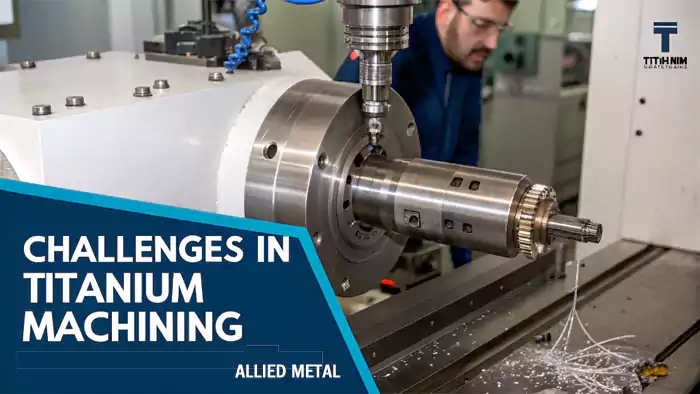
Diving Deeper into Titanium Machining Challenges
As I mentioned, titanium is a bit of a beast to machine, but "beast" doesn't mean "impossible." It means you have to be smart, prepared, and use the right strategies. My experience has taught me that understanding these challenges intimately is the first step to overcoming them.
Here’s a more detailed look at the main hurdles:
-
Poor Thermal Conductivity: This is, in my opinion, the number one challenge. Titanium conducts heat at about 1/4th the rate of steel and about 1/13th the rate of aluminum. During cutting, the heat generated doesn't dissipate quickly into the workpiece or the chips. Instead, it concentrates on the cutting edge of the tool.
- Impact: This leads to extremely high temperatures at the tool tip, causing rapid tool wear, plastic deformation of the cutting edge, and even catastrophic tool failure.
- My Approach: We combat this with lower cutting speeds, high-pressure coolant directed precisely at the cutting zone, and tool coatings that act as thermal barriers. Sometimes, we use minimum quantity lubrication (MQL) if flood coolant isn't ideal for a specific setup.
-
High Chemical Reactivity: At elevated temperatures (which, as we just discussed, are common when machining titanium), titanium is highly reactive. It can chemically react with the cutting tool material, especially if the tool coating is compromised.
- Impact: This reactivity leads to galling (where workpiece material welds to the tool), crater wear on the tool face, and built-up edge (BUE). Galling is a particular nuisance as it ruins the surface finish and can quickly break the tool.
- My Approach: Sharp tools are critical to minimize friction and heat. Appropriate coatings (like TiAlN, AlTiN) are essential to create a barrier. Consistent chip flow to carry away heat and material is also important.
-
Work Hardening Tendency: Many titanium alloys, particularly grades like Ti-6Al-4V, will work harden rapidly if the tool merely rubs against the surface instead of cutting cleanly.
- Impact: The surface becomes harder than the bulk material, making subsequent cuts much more difficult and drastically reducing tool life.
- My Approach: We ensure continuous cutting action by maintaining adequate feed rates and depths of cut. Dwelling (letting the tool spin in one place) is a big no-no. Sharp tools help here too, as they are less likely to rub.
-
Low Modulus of Elasticity (Springiness): Titanium is quite "springy" compared to steel. Its modulus of elasticity is about half that of steel.
- Impact: This can cause the workpiece to deflect away from the cutting tool, leading to inaccuracies, chatter (vibration), and a poor surface finish, especially on thin-walled or slender parts. Chatter is a tool killer and ruins parts.
- My Approach: Rigid machine setups, secure workholding (using fixtures designed to support the part well), and sharp cutting tools that minimize cutting forces are key. Sometimes we adjust cutting strategies, like using climb milling instead of conventional milling, to manage deflection. For delicate parts, I often advise my team to take multiple light passes rather than one heavy pass.
-
Chip Control: Titanium chips are often long, stringy, and tough. They can also be flammable under certain conditions (especially fine chips or dust).
- Impact: Poor chip control can lead to chips wrapping around the tool or workpiece, damaging the surface finish or breaking the tool. Flammable chips pose a safety hazard.
- My Approach: We use tools with good chipbreaker geometries. High-pressure coolant helps break chips and flush them away. Proper machine enclosure and, if necessary, fire suppression systems are considered for safety.
Successfully machining titanium, especially for complex components like those David designs, requires a deep understanding of these challenges and a commitment to using the best tools, techniques, and process control. It’s this expertise that we've cultivated at Allied Metal.
What Are the Common Applications for Titanium Parts?
Knowing titanium's strengths and machining intricacies, where does this material truly shine? Understanding its typical uses can inspire new design possibilities for your own high-performance needs.
Titanium parts are favored in aerospace (airframes, engines), medical (implants, surgical tools), chemical processing (corrosion resistance), marine, and high-performance automotive/motorsport due to their strength-to-weight ratio and durability.
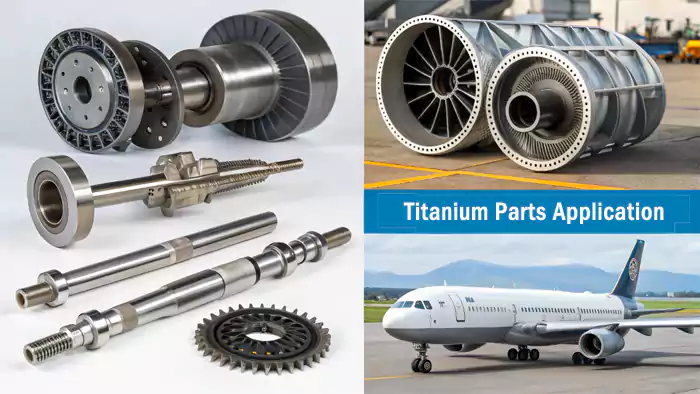
Diving Deeper into Titanium Applications
The unique combination of high strength, low weight, excellent corrosion resistance, and biocompatibility makes titanium and its alloys indispensable in a surprising number of fields. When I see a request for quote for a titanium part, it often falls into one of these key areas:
-
Aerospace and Defense: This is perhaps the most well-known application area.
- Examples: Airframe structural components (wing spars, landing gear), engine components (fan blades, discs, casings), fasteners, hydraulic tubing.
- Why Titanium?: The exceptional strength-to-weight ratio is critical for fuel efficiency and performance. Its ability to withstand high temperatures is vital for engine parts. I’ve machined countless components for aircraft where every gram saved translates to significant operational cost savings or increased payload capacity.
-
Medical and Dental: Titanium's biocompatibility (it's non-toxic and not rejected by the human body) and corrosion resistance make it ideal for implantation.
- Examples: Joint replacements (hips, knees), bone screws and plates, dental implants, pacemaker cases, surgical instruments.
- Why Titanium?: Besides biocompatibility, its strength allows for smaller, less obtrusive implants. Its non-magnetic nature is also beneficial for MRI compatibility. We maintain extremely high standards of cleanliness and precision for our medical clients like David might work with.
-
Chemical Processing and Marine: The outstanding corrosion resistance of titanium, especially to chlorides (like saltwater) and many industrial chemicals, is a huge advantage.
- Examples: Heat exchangers, pumps, valves, piping systems, propeller shafts, underwater housings.
- Why Titanium?: In harsh chemical environments or saltwater, titanium components can last significantly longer than those made from other metals, reducing maintenance and replacement costs. I recall a marine application where stainless steel parts were failing regularly, and switching to titanium solved the problem completely.
-
High-Performance Automotive and Motorsport: Every ounce matters in racing, and durability is key.
- Examples: Connecting rods, exhaust systems, valve springs, suspension components, high-performance fasteners.
- Why Titanium?: Reducing reciprocating mass in engines (like con-rods) improves performance. Its heat resistance is great for exhaust components.
-
Sporting Goods:
- Examples: Bicycle frames, golf club heads, tennis rackets, camping gear.
- Why Titanium?: Lightweight and strong, offering a premium feel and performance.
-
Architecture and Art:
- Examples: Building facades (like the Guggenheim Museum Bilbao), sculptures.
- Why Titanium?: Unique aesthetic qualities, long-term durability, and corrosion resistance mean it can withstand the elements for decades.
The common thread in all these applications is a need for high performance where standard materials fall short. For someone like David, designing industrial automation systems, titanium might be considered for robotic end-effectors (grippers) where low inertia and high strength are needed for fast, precise movements, or for components in systems operating in corrosive environments. While the initial material cost of titanium is higher, its longevity and performance benefits often lead to a lower total cost of ownership in demanding situations. It’s a material that truly enables innovation.
Case Studies in Titanium Component Machining
Theory is one thing, but how does our expertise translate to real-world components? Here are two examples of complex titanium parts we have manufactured, showcasing how we overcome the material's challenges to deliver exceptional results.
Case Study 1: Aerospace Landing Gear Bracket
A leading aerospace client required a critical bracket for a new aircraft's landing gear assembly. The component needed to offer extreme strength and fatigue resistance at the lowest possible weight, a perfect application for Grade 5 titanium.
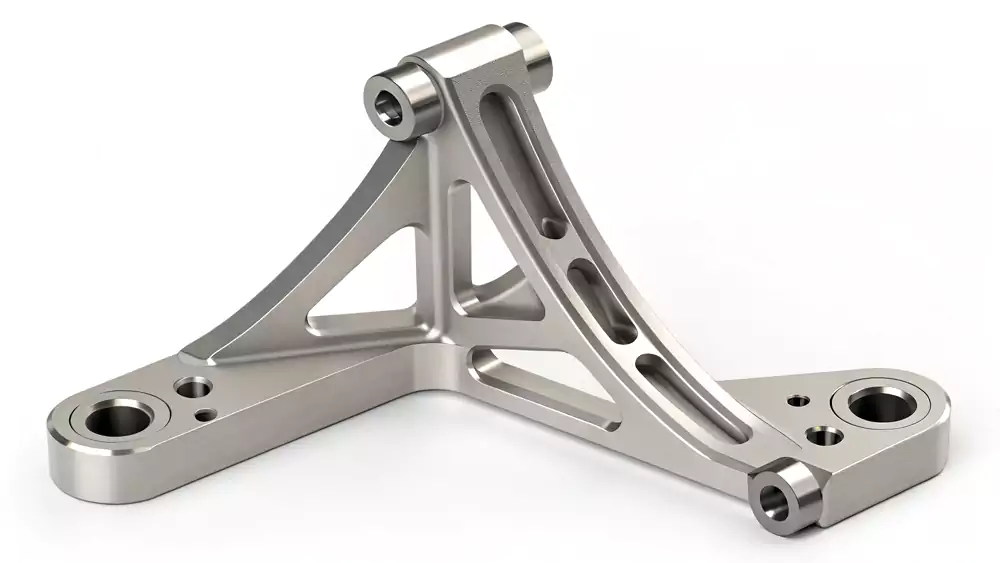
Part Specifications:
- Part Name: Landing Gear Structural Bracket
- Material: Titanium Ti-6Al-4V (Grade 5)
- Critical Tolerances:
- True Position of mounting holes: Ø 0.05 mm
- Bearing Bore Diameter: ±0.010 mm
- Machining Process: 5-Axis CNC Milling
- Post-Processing: Stress Relief Annealing, Glass Bead Blasting
- Inspection: 100% CMM verification and material certification
Manufacturing Challenge & Solution:
The primary challenge was machining the deep pockets required for weight reduction without causing material stress or tool chatter. Our solution involved using high-pressure coolant (1000 PSI) and specialized carbide end mills with a low radial engagement toolpath strategy. This approach minimized heat buildup and tool deflection. After machining, the part underwent a controlled stress relief cycle in our calibrated furnace to ensure long-term dimensional stability.
The Result:
The final component achieved a 40% weight reduction compared to the previous steel design while exceeding all strength and fatigue life requirements. Our precise process control ensured every bracket was a perfect, fully traceable, flight-ready part.
Case Study 2: Medical Spinal Fusion Cage
A medical device company tasked us with producing a spinal fusion cage, an implant used in spinal surgery. The part required a complex, porous-like structure to encourage bone growth (osseointegration), absolute biocompatibility, and flawless, burr-free surfaces.
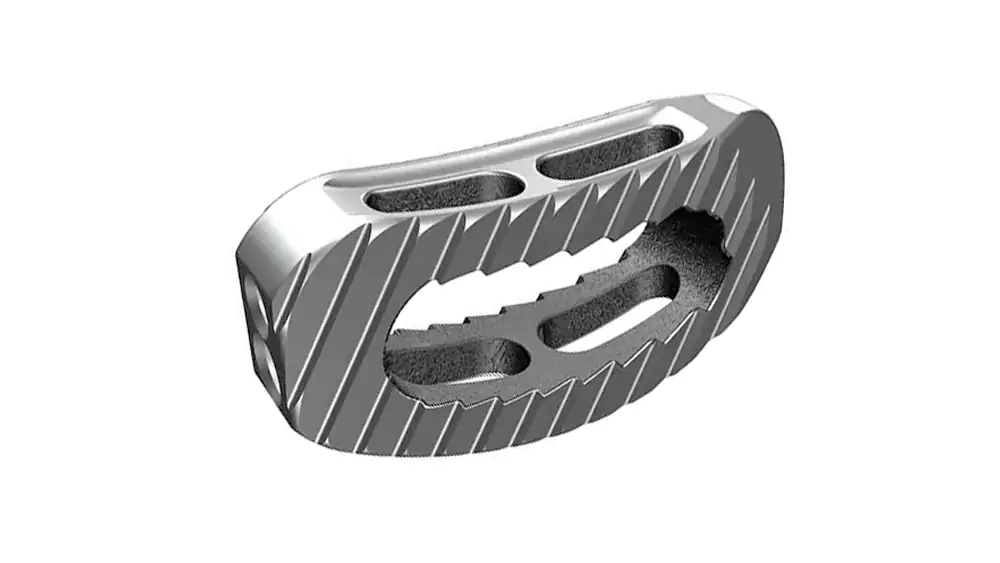
Part Specifications:
- Part Name: Interbody Spinal Fusion Cage
- Material: Titanium Ti-6Al-4V ELI (Grade 23)
- Critical Tolerances:
- Overall Profile Tolerance: ±0.05 mm
- Internal Lattice Feature Size: ±0.10 mm
- Surface Finish: Ra 0.4 µm on bone-contacting surfaces
- Machining Process: High-Speed 5-Axis CNC Milling
- Post-Processing: Ultrasonic Cleaning & Passivation
Manufacturing Challenge & Solution:
The challenge was to machine the intricate lattice structure without leaving any burrs, which is unacceptable for a medical implant. We utilized extremely sharp, micro-end mills and a high-speed machining strategy with very light cuts. The entire process was performed in a climate-controlled environment to ensure stability. After machining, the parts went through a multi-stage ultrasonic cleaning and passivation process to meet the stringent FDA requirements for cleanliness and biocompatibility.
The Result:
We delivered a batch of implants with 100% burr-free surfaces and dimensional accuracy that passed the client's rigorous quality inspection. Our process provided a faster and more cost-effective solution than the additive manufacturing (3D printing) methods they had previously considered for this complex geometry.
Conclusion
CNC machining titanium is challenging but offers unparalleled strength, light weight, and corrosion resistance for demanding applications. Success requires expertise, proper tooling, and optimized techniques.
Footnotes:
-
Discover the advantages of titanium in creating durable components, which can elevate your projects and enhance product quality. Check out this informative link. ↩
-
Discover the various applications of Ti-6Al-4V, one of the most popular titanium alloys, known for its exceptional properties. ↩
-
Exploring this resource will provide you with detailed insights into the properties and uses of CP titanium grades, essential for various industries. ↩
-
Discover the unique properties of Ti-6Al-4V ELI, which make it ideal for medical applications, ensuring safety and performance. ↩
-
This link will explain the importance of high-pressure coolant in titanium machining, helping you optimize your operations and tool life. ↩
-
Learn about solid carbide end mills and how they can improve your machining efficiency and precision. ↩
-
Find out how TiAlN coating can enhance tool performance and longevity in machining applications. ↩

Finding the right link can be a pain, but 188betlinkvao seems to keep everything up-to-date. Saves a lot of faffing about! Gets me straight to the action. Give it a go: 188betlinkvao